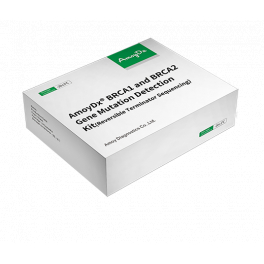 View full size
View full size
- Analýza nukleových kyselin
- Analýza proteinů
- Biochemické reagencie
- Enzymy
- Editování genů
- Klonování
- Klinická diagnostika
- STR kity - identifikace osob, určení otcovství a příbuznosti
- Laboratorní příslušenství
- Software
- A&A Biotechnology
- AdvancedSeq
- BioDynami
- Plant Cell Technology
Novinky
-
XXXV. Izakovičov memoriál 2025
S potěšením oznamujeme, že se zúčastníme prestižní konference XXXV. Izakovičov memoriál 2025, která se bude konat 8.–10. října 2025 v Grandhotelu Praha v Tatranské Lomnici na Slovensku. Izakovičov me...
Více -
1.československý kongres lékařské genetiky 2025
Na jaře se zúčastníme 1. československého kongresu lékařské genetiky, který se bude konat 2.-4. dubna 2025 v Kulturním a kongresovém centru Elektra v lázeňském městě Luhačovice. Tento jedinečný kong...
Více -
RANK 2025
Navštivte nás na 19. ročníku konference RANK 2025, která se koná 19. a 20. března v hotelu Zlatá Štika v Pardubicích. Konferenci pořádá Česká společnost klinické biochemie při ČLSJEP ve spolupráci s ...
Více
 View full size
View full size
BRCA1 and BRCA2 Gene Mutation Detection Kit
The AmoyDx® BRCA1 and BRCA2 Gene Mutation Detection Kit (Reversible Terminator Sequencing), is intended for qualitative detection of BRCA1 and BRCA2 gene mutations (including all coding exons, exon-intron boundaries) in extracted DNA from human blood samples, fresh tissue or neutral formalin-fixed paraffin-embedded (FFPE) tissue samples. The kit is intended to be used to assess BRCA1 and BRCA2 gene status in ovarian cancer and breast cancer patients.
Technological Principles
The test kit is based on Halo-shape ANnealing and Defer-Ligation Enrichment system (HANDLE system) technology which is an improved Molecular Inversion Probe (MIP) technology to capture the target gene region. The unique molecular identifier (UID) is introduced to both ends of each DNA fragment, and traces back to the original template for error correction. The library construction time of HANDLE system is 5 hours with 1 hour hands-on time.
The probe contains an extension arm and a ligation arm which are complementary to the target gene region. First, the extension arm and ligation arm are anchored to the target gene region, and the DNA is extended from the extension arm to the ligation arm by the function of DNA polymerase. Next, the nicks are connected with the ligase to generate the circular products. The remaining linear probes, single-strand and double-strand nucleic acid are digested using exonuclease. Finally, the universal PCR amplification is performed to enrich the target libraries.
Košík
Platební brána



